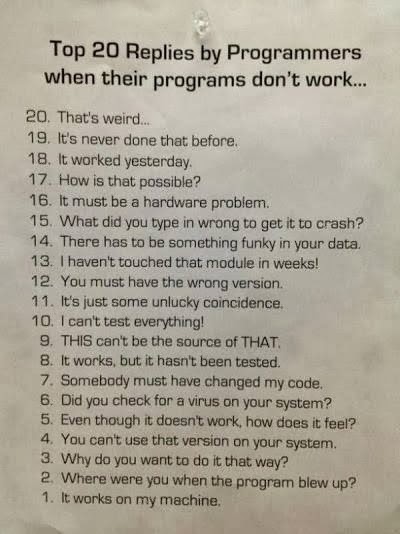Noam Scheiber examines the fanatic devotion to youth in (some parts of) the high tech culture:
Silicon Valley has become one of the most ageist places in America. Tech luminaries who otherwise pride themselves on their dedication to meritocracy don’t think twice about deriding the not-actually-old. “Young people are just smarter,” Facebook CEO Mark Zuckerberg told an audience at Stanford back in 2007. As I write, the website of ServiceNow, a large Santa Clara–based I.T. services company, features the following advisory in large letters atop its “careers” page: “We Want People Who Have Their Best Work Ahead of Them, Not Behind Them.”
And that’s just what gets said in public. An engineer in his forties recently told me about meeting a tech CEO who was trying to acquire his company. “You must be the token graybeard,” said the CEO, who was in his late twenties or early thirties. “I looked at him and said, ‘No, I’m the token grown-up.’”
Investors have also become addicted to the youth movement:
The economics of the V.C. industry help explain why. Investing in new companies is fantastically risky, and even the best V.C.s fail a large majority of the time. That makes it essential for the returns on successes to be enormous. Whereas a 500 percent return on a $2 million investment (or “5x,” as it’s known) would be considered remarkable in any other line of work, the investments that sustain a large V.C. fund are the “unicorns” and “super-unicorns” that return 100x or 1,000x — the Googles and the Facebooks.
And this is where finance meets what might charitably be called sociology but is really just Silicon Valley mysticism. Finding themselves in the position of chasing 100x or 1,000x returns, V.C.s invariably tell themselves a story about youngsters. “One of the reasons they collectively prefer youth is because youth has the potential for the black swan,” one V.C. told me of his competitors. “It hasn’t been marked down to reality yet. If I was at Google for five years, what’s the chance I would be a black swan? A lot lower than if you never heard of me. That’s the collective mentality.”
Some of the corporate cultures sound more like playgroups than workgroups:
Whatever the case, the veneration of youth in Silicon Valley now seems way out of proportion to its usefulness. Take Dropbox, which an MIT alumnus named Drew Houston co-founded in 2007, after he got tired of losing access to his files whenever he forgot a thumb drive. Dropbox quickly caught on among users and began to vacuum up piles of venture capital. But the company has never quite outgrown its dorm-room vibe, even now that it houses hundreds of employees in an 85,000-square-foot space. Dropbox has a full-service jamming studio and observes a weekly ritual known as whiskey Fridays. Job candidates have complained about being interviewed in conference rooms with names like “The Break-up Room” and the “Bromance Chamber.” (A spokesman says the names were recently changed.)
Once a year, Houston, who still wears his chunky MIT class ring, presides over “Hack Week,” during which Dropbox headquarters turns into the world’s best-capitalized rumpus room. Employees ride around on skateboards and scooters, play with Legos at all hours, and generally tool around with whatever happens to interest them, other than work, which they are encouraged to set aside. “I’ve been up for about forty hours working on Dropbox Jeopardy,” one engineer told a documentarian who filmed a recent Hack Week. “It’s close to nearing insanity, but it feels worth it.”
It’s safe to say that the reigning sensibility at Dropbox has conquered more or less every corner of the tech world. The ping-pong playing can be ceaseless. The sexual mores are imported from college—“They’ll say something like, ‘This has been such a long day. I have to go out and meet some girls, hook up tonight,’ ” says one fortysomething consultant to several start-ups. And the vernacular is steroidally bro-ish. Another engineer in his forties who recently worked at a crowdsourcing company would steel himself anytime he reviewed a colleague’s work. “In programming, you need a throw-away variable,” the engineer explained to me. “So you come up with something quick.” With his co-workers “it would always be ‘dong’ this, ‘dick’ that, ‘balls’ this.”
There’s also the blind spot about having too many youth-focussed firms in the same market:
The most common advice V.C.s give entrepreneurs is to solve a problem they encounter in their daily lives. Unfortunately, the problems the average 22-year-old male programmer has experienced are all about being an affluent single guy in Northern California. That’s how we’ve ended up with so many games (Angry Birds, Flappy Bird, Crappy Bird) and all those apps for what one start-up founder described to me as cooler ways to hang out with friends on a Saturday night.
H/T to Kathy Shaidle for the link.

 I actually chuckled when I read rumor that the few anti-open-source advocates still standing were crowing about the Heartbleed bug, because I’ve seen this movie before after every serious security flap in an open-source tool. The script, which includes a bunch of people indignantly exclaiming that many-eyeballs is useless because bug X lurked in a dusty corner for Y months, is so predictable that I can anticipate a lot of the lines.
I actually chuckled when I read rumor that the few anti-open-source advocates still standing were crowing about the Heartbleed bug, because I’ve seen this movie before after every serious security flap in an open-source tool. The script, which includes a bunch of people indignantly exclaiming that many-eyeballs is useless because bug X lurked in a dusty corner for Y months, is so predictable that I can anticipate a lot of the lines.



